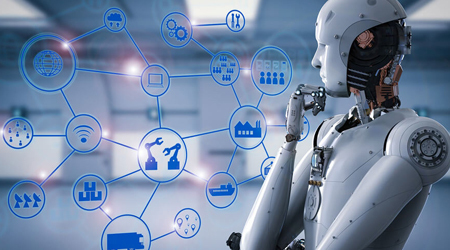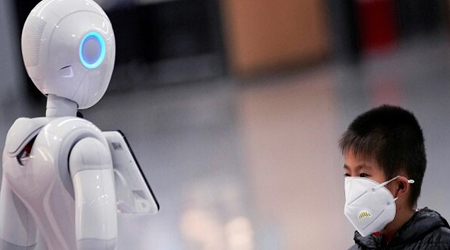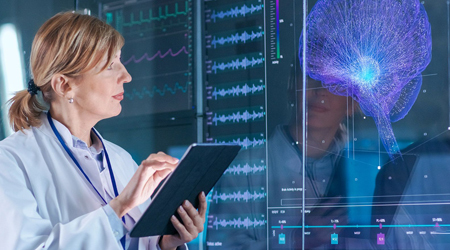Best Uses of Artificial Intelligence in Dentistry
 By Anolytics | 11 December, 2020 in AI in Healthcare | 4 mins read
By Anolytics | 11 December, 2020 in AI in Healthcare | 4 mins read

Artificial intelligence (AI) is a branch of computer science that describes the research and development of computer-generated human intelligent behavior in machines. The whole process involves researching and machine learning training that enables a computer to develop intelligent behavior and work independently while solving relevant problems.
Actually, AI is becoming a new source of technology to bring more efficiency with better results. Yes, in the healthcare sector, AI brought innovations in the diagnosis process, especially in medical imagining helping both – doctors and patients provide and enjoy the most advanced treatment facilities.
AI in Dentistry with Deep Learning
Deep learning is a class of AI algorithms that enables the computer program to automatically extract and learn important features of input data for further interpretation of completely fresh unseen images.
AI in machine learning started gaining its foothold with the introduction of data computing as well as cloud computing ability and the availability of a huge amount of data collected from various resources.
Also Read: How Machine Learning In Dentistry Can Improve The Dental Imaging Analysis
With the massive data sets, for an instance in the field of radiology – A specific algorithm can be created which further helps to diagnose and suggest probable treatment options.
AI is gradually pushing its head in the field of dental radiology with more emphasis on diagnostic records in digital three dimensional (3D) scans and cone beam computed tomography. Using the more qualitative medical imaging datasets much information can be gathered and computed to create a full functionally AI model for quick and accurate diagnosis for more enhanced treatment planning.
AI in Dental Radiology
Nowadays, owing to digitalization, most dental practices are using digital radiography that can be transmitted into the computer system. AI-enabled software delivers pre-analyzed images within a short time. And to perform this action, such software needs a whole range of algorithms.
And these computer vision supporting algorithms are the result of in-depth software trained with a huge amount of training datasets of dental radiographs. Dentists and dental specialist radiologists from around the world identified tens of thousands of pathological changes and traces of previous dental treatments on the radiographs.
Also Read: How Computer Vision Can Improve Accuracy of Diagnosis in Medical Imaging Analysis
And the entire data then fed into the artificial neural networks, enabling AI models to diagnose or distinguish between various dental findings like caries, infections, and root canal fillings or cavities, etc.
THE FUTURE OF AI IN DENTISTRY
AI in healthcare has already strengthened its foothold by providing many automated systems, applications, and models that work on machine learning principles and perform various actions without human help. Robots, drones, and new drug discoveries are the new age of AI-enabled systems working into various sub-fields of the medical sector giving promising results.
Also Read: Applying Artificial Intelligence and Machine Learning in Robotics with Right Training Data
Similarly, artificial intelligence in dental radiology is going to play a big role in performing various tasks with an automated system. Further, the future of AI in dentistry is more promising with the capability to integrate more functions and make it easier to perform even crucial tasks. Below here we have also discussed more scope of AI applications in dentistry.
Scheduling of Appointments with Patients
AI with virtual assistance can be used to schedule the patient’s appointments that help is reducing the cost of manual handling and maximize productivity. This will also reduce the burden on scheduling personal and potentially remove the need for long sessions for newly hired dentists.
Also Read: What Does a Virtual Assistant do and what are the key areas it works
In order to train such AI-enabled applications, virtual assistance training data will be used to train the model. Once trained these automated devices or applications can be used in performing various actions like scheduling appointments or assisting patients at receptions.
Interactive Communication with Patients
Chatbots developed with NLP based machine learning process that helps machines to listen, understand and respond giving human’s with most suitable answers to solve their queries related to a particular field like here dental treatments and care, etc.
Also Read: What are Chatbots and how they are changing the World of Business
Queries answered to patients after appointments will reduce the time spent by scheduling and clinical staff on handling prescription refill requests or answering simple queries such as post-op care instructions, what to expect after procedures or how to recognize emergencies etc.
Detection of Tooth Decay with Speediness
Detecting tooth decay by dental radiologists is a time-consuming and tangoing job, as sometimes dentist has to view dozens of these pictures daily, looking for signs of decay on up to 300 surfaces. And there are chances for a dentist to potentially miss signs of tooth decay after viewing so many radio-graphs.
But AI can be utilized to highlight potential problem areas on radio graphs, thereby reducing missed signs of decay. The more radio-graphs the AI scans, the better it will become at spotting irregularities, leading to an almost flawless rate of correct diagnoses for precise treatments.
Summing-up
These are a few more areas where the future of AI can be utilized in the dental industry. And further AI will bring more breakthroughs in the field of technology progressing rapidly providing a golden opportunity for the healthcare sector to bring more innovations for patient treatment and care.
And dentist needs to be more familiar with this technology as the future of dentistry will have more innovations to include more implementation of AI into various applications.
Though, AI cannot fully replace dentists and radiologists but will play a vital role in faster processing of medical images while ensuring accuracy. Although AI can assist in numerous ways, the final call has to be made by a dentist as dentistry is a multidisciplinary approach.
But the future of AI in dentistry is more promising and it will also bring exciting diagnostic opportunities for the future and will certainly be an integral part of dental radiology.
How Anolytics Helps for AI in Dental Radiology?
Anolytics for AI in dentistry making the diagnosis process faster and accurate by providing high-quality medical imaging data sets to train the models. It is offering a Medical image annotation service for AI dental imaging to create a huge amount of training data sets for deep learning algorithms.
Also Read: Role of Medical Image Annotation in the AI Medical Image Diagnostics for Healthcare
Working with a team of experienced dental radiologists, Anolytics can produce world-class healthcare training data with the best quality while ensuring the privacy and security of data sets. It is expertized in data annotation with more specialization is image annotation service available for diverse fields such as healthcare, automotive, retail, agriculture, and e-commerce, etc.
please contact our expert.
Talk to an Expert →
You might be interested

- AI in Healthcare 27 Mar, 2020
How Big Data & AI is used in Healthcare System to Combat Coronavirus Outbreak?
Coronavirus or scientific name COVID-19, is one the most deadly virus of the century infected more than half of the mill
Read More →
- AI in Healthcare 16 May, 2020
Best Diagnostic Imaging Techniques for Using AI in Medical Diagnosis
Artificial intelligence (AI) and machine learning have enough potential to make various tasks in the healthcare industry
Read More →
- AI in Healthcare 10 Jan, 2022
How AI is Improving Emergency Room Situations in Healthcare
Artificial Intelligence software and technologies have changed a multitude of industries in recent years, including educ
Read More →